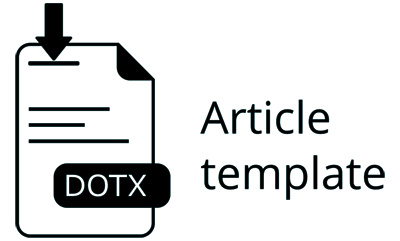Analisis penerapan lean six sigma terhadap pengendalian pemborosan material, waktu dan biaya berdasarkan kualifikasi perusahaan konstruksi di Jawa Barat
Abstract
Application lean six sigma (LSS) in West Java is still more often used in the manufacturing industry, in order to provide good product quality for customer satisfaction. Therefore, this study aims to determine how far the application of LSS in West Java has been applied to the construction industry and to find out whether there are differences between each company's qualifications regarding how to control material waste, time waste and cost waste in construction projects after controlling LSS. The method used to answer the purpose of implementing LSS is a descriptive statistical test. While the methods used for different ways of controlling the wastage of materials, time and costs are Multivariate Analysis of Covariance (MANCOVA). The results of the descriptive statistical tests show that the application of LSS to large companies is included in the Very Good criteria (BS) with a score of 82%, for medium-sized companies it gets a value of 75% and small companies with a value of 74%, which means that its application is included in the Good criteria (B). The MANCOVA test results show that there is a difference between large and medium-sized companies in controlling material wastage. There is a difference between large and medium-sized companies in controlling time wastage. There is a difference between large companies and small companies in controlling time wastage. As for the wastage of costs, each company's qualifications in West Java do not have significant differences.
References
Al-Aomar, R. (2012). A lean construction framework with six sigma rating. International Journal of Lean Six Sigma, 3(4), 299–314. https://doi.org/10.1108/20401461211284761
Alwi, I. (2015). Kriteria empirik dalam menentukan ukuran sampel pada pengujian hipotesis statistika dan analisis butir.
George, M. L. (2002). Combining Six Sigma Quality with Lean Production Speed.
Kamilah, E. N. (2015). Pengaruh keterampilan mengajar guru terhadap hasil belajar siswa pada mata pelajaran Akuntansi. repository.upi.edu.
Kusuma, D. P. A. (2019). Implementasi Lean Construction Untuk Meminimalkan Waste Pada Proyek Konstruksi. Studi kasus: proyek pembangunan gedung kejaksaan tinggi riau.
Latief, Y., & Utami, R. P. (2009). Penerapan Pendekatan Metode Six Sigma Dalam Penjagaan Kualitas Pada Proyek Konstruksi. MAKARA, TEKNOLOGI, 13(2).
Mir, S. J., Gangha, G., & Indhu, B. (2017). Lean Six Sigma the Improvement of the Road Construction. Dalam International Journal of Civil Engineering and Technology (Vol. 8, Nomor 5).
Nilda, M. J., & Herianto. (t.t.). Konsep Uji Validitas dan Reliabilitas Dengan Menggunakan SPSS.
Nyata, D. S., & Wiguna, I. P. A. (2018). Analisis Keterlambatan pada Proyek PT. Jatim Taman Steel di Gresik dengan Menggunakan Lean Six Sigma Framework. Jurnal Aplikasi Teknik Sipil, 16(1).
Olivia, J., & Nurfebiaraning, S. (2019). Pengaruh video advertising tokopedia versi “jadikan ramadan kesempatan terbaik†terhadap respon afektif khalayak (Vol. 7).
Pituch, K. A., & Stevens, J. (James P. (2016). Applied multivariate statistics for the social sciences : analyses with SAS and IBM’s SPSS: Vol. 6th Edition.
Purnama, I. D. (2022, April 28). Indonesia Gandeng Jepang Tingkatkan Kualitas Bangunan di IKN Nusantara. www.inews.id. https://www.inews.id/finance/bisnis/indonesia-gandeng-jepang-tingkatkan-kualitas-bangunan-di-ikn-nusantara
Raja Sreedharan, V., & Raju, R. (2016). A systematic literature review of Lean Six Sigma in different industries. Dalam International Journal of Lean Six Sigma (Vol. 7, Nomor 4, hlm. 430–466). Emerald Group Publishing Ltd. https://doi.org/10.1108/IJLSS-12-2015-0050
Renita S., A., & Suripto. (2022). Jurnal Rivet (Riset dan Invensi Teknologi) Evaluasi Waste dan Implementasi Lean Construction Proyek Gedung Kampus X.
Rumane, A. R. (2013). Quality Tools for Managing Construction Projects.
Shift Indonesia. (2019, Mei 29). Sejarah Six Sigma. SHIFTINDONESIA. https://shiftindonesia.com/sejarah-six-sigma/
Sholikhah, A. (2016). Statistik Deskriptif Dalam Penelitian Kualitatif. KOMUNIKA, 10(2).
Soraya, U., Husin, A. E., Kussumardianadewi, B. D., & Prabawa, I. P. I. (2022). Key success factors for lean six sigma implementation on Light Rail Transit Station construction project. Teknika: Jurnal Sains dan Teknologi, 18(1), 56. https://doi.org/10.36055/tjst.v18i1.15632
Statistics, S. (t.t.). Statistics Solutions Advancement through Clarity Multivariate Analysis of Covariance (MANCOVA). http://www.statisticssolutions.com
Sugiyono. (2016). Metode Penelitian Kuantitatif, Kualitatif Dan R&D (10 Ed.). Alfabeta.
Sutrisno, & Wulandari, D. (2018). Multivariate Analysis of Variance (MANOVA) untuk Memperkaya Hasil Penelitian Pendidikan. Aksioma, 9(1).
Trigunarsyah, B., Sanusi, R. S., & Sulistyoweni. (2014). Permasalahan Pemborosan/Biaya-Tak-Perlu Pada Pelaksanaan Konstruksi di Indonesia. Conference Paper. https://doi.org/10.13140/2.1.2719.3609
Ulfa, R. (2021). Variabel Penelitian Dalam Penelitian Pendidikan. Jurnal Pendidikan dan Keislaman, 2685(6115).
Van Den Bos, A., Kemper, B., & De Waal, V. (2014). A study on how to improve the throughput time of lean six sigma projects in a construction company. International Journal of Lean Six Sigma, 5(2), 212–226. https://doi.org/10.1108/IJLSS-10-2013-0055
Winata, Y. A. (2017). Penerapan Analisis Kovarians Multivariat Pada Bidang Gizi (Study Kasus: Pengaruh Perbedaan Tingkat Kelas Terhadap Rata-rata Frekuensi Makan, Asupan Energi, dan Asupan Protein dengan Kovariat Berupa Berat Badan dan Usia Siswa di MTs Nurul Ummah Yogyakarta). Jurnal Matematika, 6(2).
Womack, J. P., & Jones, D. T. (2003). Lean Thinking, Banish Waste and Create Wealth in Your Corporation (2003 Ed.). FREE PRESS A Division of Simon & Schuster, Inc.
Authors who publish with this journal agree to the following terms:
- Authors retain copyright and grant the journal right of first publication with the work simultaneously licensed under a Creative Commons Attribution License that allows others to share the work with an acknowledgement of the work's authorship and initial publication in this journal.
- Authors are able to enter into separate, additional contractual arrangements for the non-exclusive distribution of the journal's published version of the work (e.g., post it to an institutional repository or publish it in a book), with an acknowledgement of its initial publication in this journal.
- Authors are permitted and encouraged to post their work online (e.g., in institutional repositories or on their website) prior to and during the submission process, as it can lead to productive exchanges, as well as earlier and greater citation of published work (See The Effect of Open Access).
 Abstract viewed = 97 times
Abstract viewed = 97 times
 PDF downloaded = 132 times
PDF downloaded = 132 times










